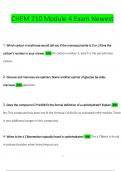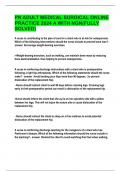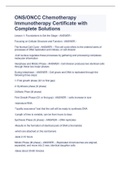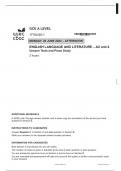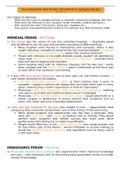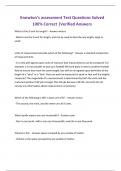Exam (elaborations)
CHEM 210 Module 4 Exam Newest Questions and Answers (Verified by Expert)
- Module
- BioChem 210
- Institution
- Portage Learning
CHEM 210 Module 4 Exam Newest Questions and Answers (2023/2024) (Verified by Expert) CHEM 210 Module 4 Exam Newest Questions and Answers (2023/2024) (Verified by Expert) CHEM 210 Module 4 Exam Newest Questions and Answers (2023/2024) (Verified by Expert)
[Show more]
